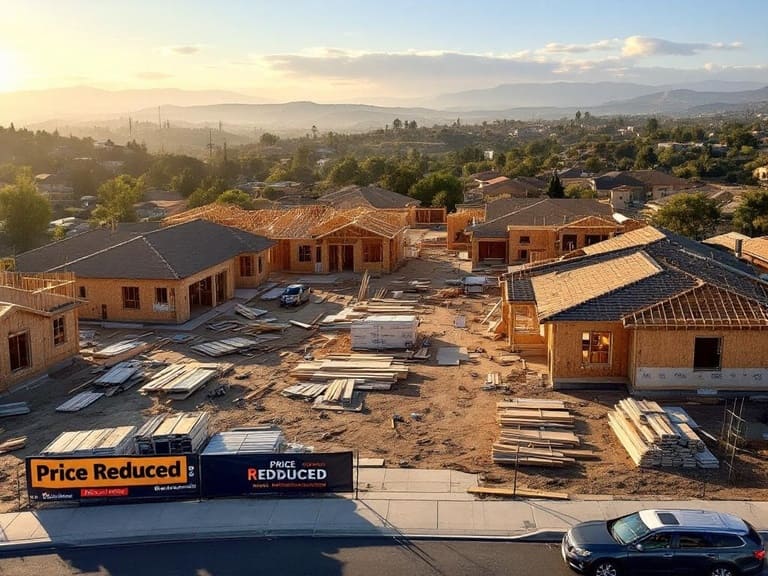Buider confidence inched up in July, offering a modest sign of optimism in a still-challenging housing market. According to the National Association of Home Builders (NAHB)/Wells Fargo Housing Market Index, builder confidence in the market for newly built single-family homes rose by one point to 33. This marks the first monthly increase since April, though the index remains well below the neutral benchmark of 50 for the 15th straight month.
The slight increase in builder confidence coincides with the passage of the One Big Beautiful Bill Act, which provided tax relief to builders, businesses, and households. Despite that policy support, the industry continues to face soft demand. Traffic of prospective buyers dropped another point to 20 in July, indicating that potential homebuyers remain hesitant amid economic uncertainty and fluctuating mortgage rates.
Price Cuts Reach Highest Level Since 2022
To counter weak buyer traffic, more builders have turned to price reductions. In July, 38% of builders reported cutting prices to boost sales. This is the highest percentage since 2022 and underscores the strain builders face in attracting buyers despite tax incentives and modest gains in confidence.
National Association of Home Builders Chief Economist Robert Dietz noted that “while the tax relief has brought some marginal relief to builders’ balance sheets, the demand-side pressures remain stubborn.” Many builders are also offering mortgage rate buydowns and closing cost incentives as buyers grapple with affordability.
Sales expectations over the next six months did improve, climbing three points to 43. That figure suggests that builders are hopeful about a rebound later in the year, especially if mortgage rates stabilize and consumer confidence picks up.
Regional Sentiment Mixed Across U.S.
Builder sentiment varied by region. The Northeast saw an increase, the Midwest held steady, but the South and West both recorded declines. The West, in particular, continues to struggle with affordability, high land costs, and regulatory burdens—issues that disproportionately affect homebuilders in California and surrounding states.
For the San Gabriel Valley and nearby areas, which are part of the broader Western region, the decline in confidence may signal a slower pipeline of new housing projects. That could exacerbate long-term housing shortages if the trend persists, despite legislative attempts to stimulate supply through tax and zoning reforms.
Outlook: Modest Optimism Amid Caution
While builder confidence inches up nationally, sustained progress may depend on broader economic conditions. With mortgage rates having ticked up in early July before moderating in the latter half of the month, buyers remain cautious. Inflation concerns and uncertainty about Federal Reserve actions may also play a role in keeping prospective homeowners on the sidelines.
Even with some positive indicators—such as tax relief and improved future sales expectations—builders continue to face a market that requires aggressive pricing strategies and buyer incentives. As the second half of 2025 unfolds, the industry will be watching closely for signs that current demand headwinds may ease.


